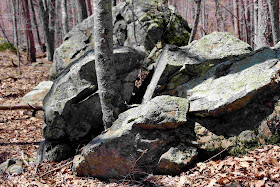Please take some time to read the message from Dennis Main, our President, and look at the bylaws. I am sure many of you would be quite capable of working with and understanding these efforts. Maybe you would consider joining the team by becoming a member of a standing committee or ultimately working on the Board. So enjoy a few more views of what we all care about and think of how you can offer your support.
Beth
 |
| All creatures, great and small, appreciate your conservation efforts. |
 |
| Young Barred Owls need woodland expanses. Photograph by Dennis Main. |
 |
| Volunteers are the heart of our efforts. |
This update will not be nearly as exciting as one of Beth's usual blogs, and it certainly will be a challenge for her to choreograph with the splendid photography she provides weekly.
Dating back to before Avalonia received Land Trust Alliance (LTA) Accreditation, its Board of Directors (BOD) has been working on a number of initiatives, one of which was a periodic update of the By-Laws. This project was completed at the May 24, 2017 BOD meeting. The last major update had been March 26, 2014, and the current amendments rectify a number of shortcomings in that version.
The full bylaws document can be found here and on the About Us page of our web site.
Here are some highlights of the improvements as well as an addition to an earlier amendment to align the fiscal year with the calendar year:
• The BOD size has been enlarged to allow 8-15 members from the present 7-9 to bring more talent to the board.
• Director terms will become staggered (overlapping) three-year terms with 1/3 of the Directors elected each year (all Directors will be elected at the June 22 Annual Member meeting to terms of one, two, or three years that will start January 1, 2018.) This will provide ongoing continuity and succession planning.
• The Directors will elect their officers annually at their own annual meeting.
• Membership classes and rights as enumerated in the Avalonia Land Conservancy Certificate of Incorporation have been added to the By-Laws for clarification.
• The BOD Standing Committees have been updated to better reflect the current organization.
I would like to personally thank the Governance Committee for the numerous hours of drafting, reviewing and editing of the document, and the BOD for its extensive review and final approval of the current amended version. A debt of gratitude is also due our partners at Connecticut Land and Conservation Council OUNCIL for their ongoing review and advice. Their legal and administrative experience and assistance was invaluable in our LTA Accreditation success as well.
I look forward to seeing you all at the Annual meeting June 22.
Dennis Main
860-823-MAIN
 |
| Beavers help create important habitat, and we protect it. |
 |
| Wetlands are a priority for preservation. |


























